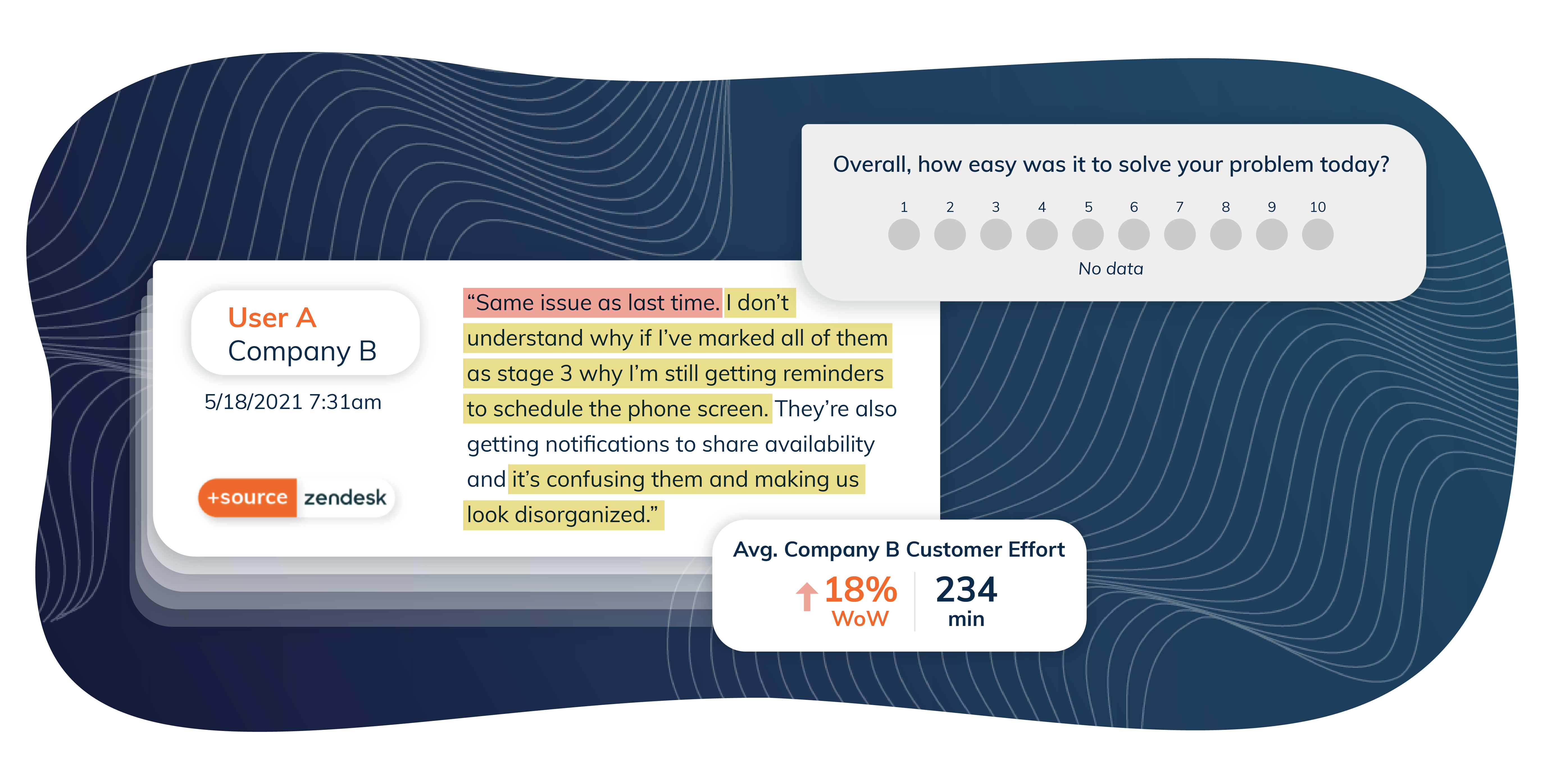If you’re reading this, you probably know that a customer health score is a composite data point assigned to individual customers to summarize relationship health. It should enable you to understand how your customer relationships are likely to evolve in the future and know which accounts need attention at any given time. It needs to consider and weigh a variety of factors, and it’s only as good as the signals that feed it.
Think about trying to score your overall individual health and well-being. I run about 20 miles a week, sometimes crushing my average pace like it’s no big deal, sometimes breathless at my warm-up pace. I make an effort to eat greens, but cheese is basically its own food group in my diet. I drink lots of water but I also love to indulge in wine. Sometimes I sleep like a baby. Other nights, I lay awake desperately trying to recall completely useless information like the name of the main character in Boy Meets World (It’s Cory). To reliably understand my capacity for a long, happy and healthy life, a medical professional would have to quantify and weigh these disparate attributes and subjective factors and roll them up into a health score.
Customer relationships are equally, if not more, complex and full of day-to-day nuances. Most health scores incorporate elements such as the percentage of available licenses activated, product usage data, and survey responses that provide solid directional cues. The problem here: many blanks are left unfilled. If my doctor gave me an A+ based only on my running log and me saying that I feel ok today, then I’d probably find a new doctor. While I’m a firm believer in the health benefits of running, that alone won’t keep me alive, healthy, and happy — it’s a combination of factors like a healthy lifestyle, stress level, sleep quality, genetics, and a balanced diet that will help me get there. Similarly, without customer sentiment and effort signals from their unstructured feedback, health scores paint an incomplete picture of customer health.
Incorporating unstructured sentiment data makes your health score more customer-centric by reflecting organic feedback that customers volunteer in their own words, from sources like support tickets and communities to comments that accompany survey ratings. Organic unstructured sentiment data is available in real-time, and it’s already at your fingertips. It’s also highest in volume, making it a highly reliable source for identifying important themes and trends. According to IDC, 80% of customer data is unstructured, and that number could grow to 95% by 2025. After all, every interaction that customers have with your company has the power to change the course of your relationship, for better or for worse. Temkin found that after a bad experience, 22% of customers cut spending with a company, and 19% completely terminated their relationship.
AI technology, more specifically Natural Language Understanding (“NLU”), analyzes customer language and sentiment at scale, strengthening your visibility into the vast spectrum of daily moments that make or break your customer experience — from the handling of a frustrating billing snafu to a creative workaround from your Support team. Health scores that feature unstructured sentiment data across the entire scope of your customer interactions offer a more well-rounded, reliable lens into customer sentiment, making it easier to identify trends, risks, and opportunities across individual customers and customer segments.
AI-based sentiment analysis can also identify the relative impact of issues that customers raise, so you can focus on what moves the needle. Is the new report format they asked for mission-critical or nice-to-have? Once you know what’s mission-critical, you can feature progress against specific goals in health scores.
.png)
Customer effort, too, is an important input to your health score. CEB found that 96% of customers who exert high effort are likely to churn, vs. only 9% of those who enjoyed effortless experiences. Your customers are using your platform and meeting their goals —great! But at what cost to them? If the processes customers rely on to support their success become too onerous, they will eventually seek easier approaches from your competition.
Imagine you work for a recruiting software. Your Customer Success Managers play an essential role in guiding customers through team structuring and hiring processes. But in between the check-ins, how often are they contacting Support for help with routine candidate lifecycle management?
Surveying effort is company-centric, not customer-centric. Instead, considering signals like the number of interactions about recurrent themes and the language customers use to describe the challenges will help you measure effort in your customers’ terms. For example, a spike in negative sentiment about candidate lifecycle management coupled with increased customer time spent communicating in related Support interactions is an important input to your health score.

Featuring unstructured sentiment data and customer effort in your health score will allow you to proactively prevent unfortunate surprises.


